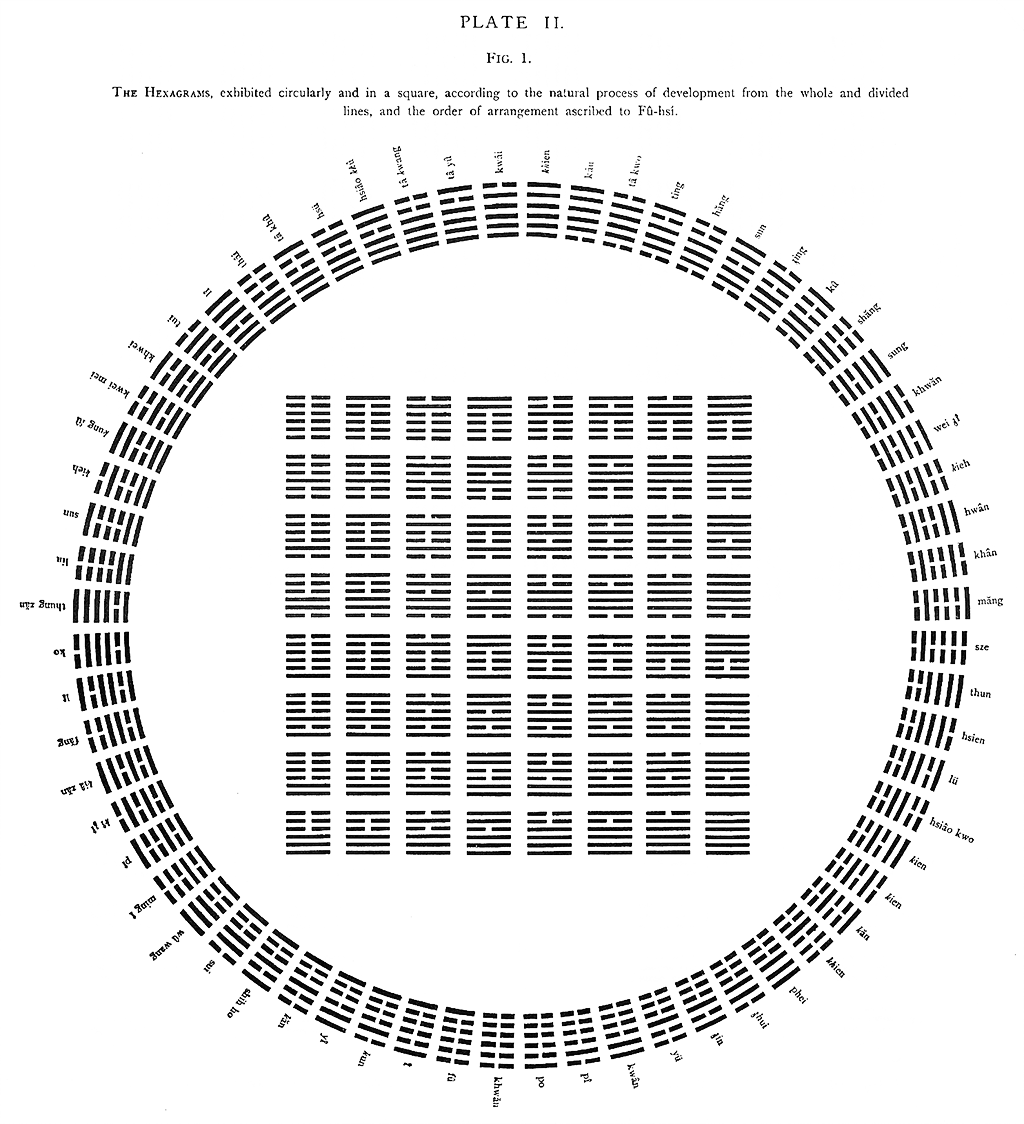This Chinese box was a gift from a dear friend who went to China. It contains art tools for calligraphy, later I added three coins to it. Originally I hadn’t found much use for it, but then I encountered its soulmate: the I Ching, or the Book of Changes.
I found it by chance, walking towards Chapultepec park in Mexico City. At the entrance to the park, a book seller had laid it out on a blanket on the floor. “Cuánto?”, “Veinte pesos jóven”. Little did he know that I would have paid any price. Earlier in the day I had been reading about it, and I knew it was meant for me.

I entered the park and sat under a tree and read the introduction, by Carl Jung. He spoke towards my skepticism:
Why not venture a dialogue with an ancient book that purports to be animated? There can be no harm in it, and the reader may watch a psychological procedure that has been carried out time and again throughout the millennia of Chinese civilization, representing to a Confucius or a Lao-tse, both a supreme expression of spiritual authority and a philosophical enigma.
The question I would ask was as clear as the sky: how could I regain my creative prowess! I was blocked to the point of clinical depression. For a person whom primarily identified himself as a designer, this was the equivalent of becoming a bird without wings.
I head back home, and on the way made a stop at a shop for the occult. How strange to find myself at a store which I was sure sold useless trinkets to gullible fools! I asked if they had stalks or coins for I Ching divination. No stalks, but they had the coins. I bought them.
When I got home I went to fetch pen and paper to write down the results of my coin casting, and in my art utensils lay this largely forgotten gift. “How appropriate”, I thought, “this is a good moment to make use of it”. I sat down meditate my question, “how do I recover my creative capacity?”, and then tossed the coins:
Frist toss: - - yin (feminine)
Second toss: - - yin (feminine)
Third toss: - - yin (feminine)
Fourth toss: - - yin (feminine)
Fifth toss: - - yin (feminine)
Sixth toss: - - yin (feminine)
The hexagram was ䷁ (kūn, the receptive).
The reading
This hexagram is made up of broken lines only. The broken lines represents the dark, yielding, receptive primal power of yin. The attribute of the hexagram is devotion; its image is the earth. It is the perfect complement of THE CREATIVE—the complement, not the opposite, for the Receptive does not combat the Creative but completes it . It represents nature in contrast to spirit, earth in contrast to heaven, space as against time, the female-maternal as against the male-paternal. However, as applied to human affairs, the principle of this complementary relationship is found not only in the relation between man and woman, but also in that between prince and minister and between father and son. Indeed, even in the individual this duality appears in the coexistence of the spiritual world and the world of the senses. But strictly speaking there is no real dualism here, because there is a clearly defined hierarchic relationship between the two principles. In itself of course the Receptive is just as important as the Creative, but the attribute of devotion defines the place occupied by this primal power in relation to the Creative. For the Receptive must be activated and led by the Creative; then it is productive of good. Only when it abandons this position and tries to stand as an equal side by side with the Creative, does it become evil. The result then is opposition to and struggle against the Creative, which is productive of evil to both.
The judgment
THE RECEPTIVE brings about sublime success,
Furthering through the perseverance of a mare.
If the superior man undertakes something and tries to lead,
He goes astray;
But if he follows, he finds guidance.
It is favorable to find friends in the west and south,
To forego friends in the east and north.
Quiet perseverance brings good fortune.
The I Ching is purposely vague, like clouds in the sky, you see what you’re familiar with. But some of its advice is unequivocal, and what I read here was “Stop trying to speak, listen. Stop trying to lead, follow. Stop trying to change, accept”. I closed the book tremendously annoyed at the answer, and put myself in bed.
The next day I tried working, without success. And the day after, and the day after, and so on, until I had to admit that perhaps the advice of the I Ching was on spot. But, I’ve never followed, I’ve never listened, I’ve never accepted my condition, what I ought to do?
I remained still until I was bored. Then, naturally, a creative urge came to me, but it had nothing to do with what I would consider “work”. I wanted to design furniture for my home. Curiously, at the time I felt very guilty about not “working”, but looking back it was one of the most productive moments of my sabbatical, and the satisfaction it gave me was beyond measure.
After this guidance the I Ching stopped speaking to me. I tried it for further divination, but its answers seemed too vague to put into use. Jung himself says you build most of the meaning through means of synchronicity, the things that are happening in your life seem related to the text, and so I suppose that no question I would pose to the I Ching was important enough so that my subconscious would see shapes in the vague contours of the I Ching.
But I’m very grateful for the one piece of advice I got from the whole endeavor.